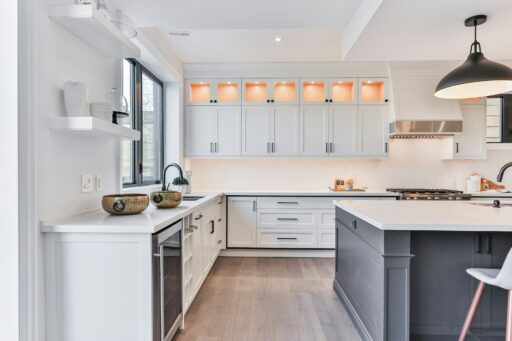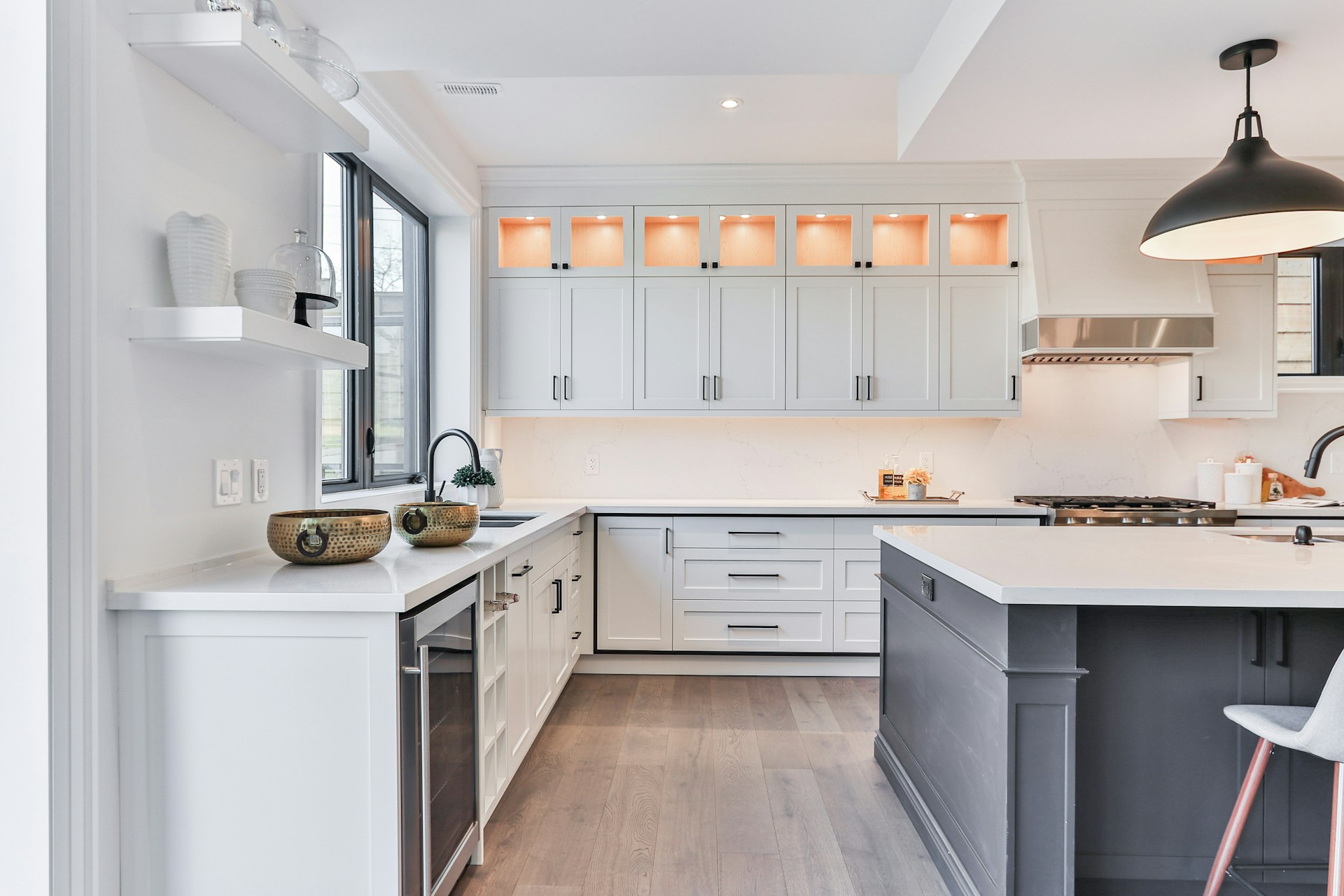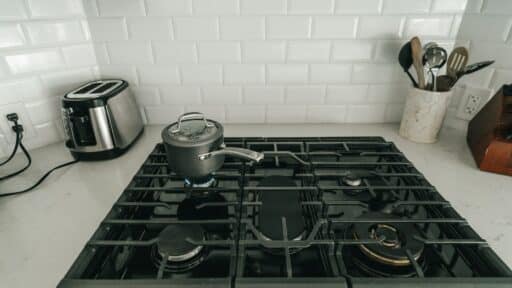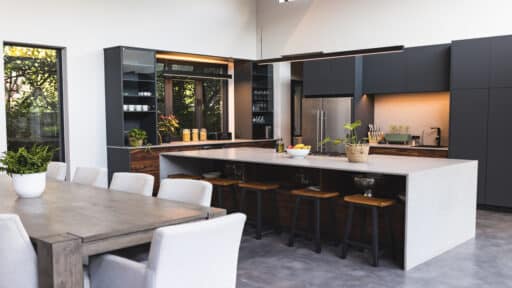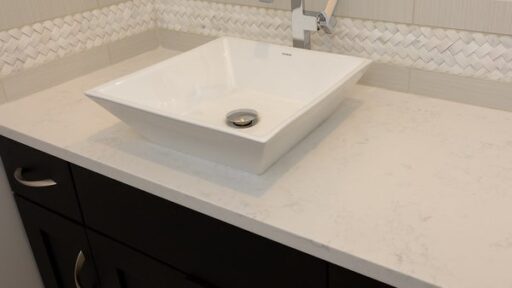Organizing kitchen cabinets can transform your cooking space into a functional and clutter-free area. Start by decluttering unused or expired items, then categorize essentials for easy access. Use storage solutions like bins, dividers, and shelf risers to maximize space. Proper organization not only enhances efficiency but also improves the visual appeal of your kitchen. For a detailed approach, explore practical strategies to optimize your kitchen cabinet layout and maintain long-term order.
Table of Contents
- Planning Your Kitchen Cabinet Makeover
- Decluttering Your Kitchen Cabinets
- Categorizing Kitchen Items for Efficiency
- Choosing the Right Storage Solutions for Your Kitchen
- Maximizing Vertical Space in Kitchen Cabinets
- Conclusion: Maintaining an Organized Kitchen
Imagine opening your kitchen cabinets and finding exactly what you need without rummaging through clutter. Sounds refreshing, doesn’t it? A well-organized kitchen can save time, reduce stress, and make meal preparation a breeze. However, many homeowners struggle with maximizing their cabinet space, often leading to frustration and inefficiency.
According to a complete guide about it, proper organization begins with understanding how to optimize every inch of your kitchen. From decluttering unused items to implementing smart storage solutions, there are practical steps anyone can take to transform their kitchen cabinets into a model of functionality.
Whether you’re dealing with limited space or simply want to streamline your cooking process, learning how to organize kitchen cabinets is the first step toward creating a more efficient and visually appealing kitchen.
Planning Your Kitchen Cabinet Makeover
Before organizing your kitchen cabinets, it’s important to evaluate the current setup and establish a clear plan. A thoughtful approach streamlines the process and helps achieve results that align with your needs. Start by assessing how your cabinets are currently used and identifying areas that require improvement.
Here are key steps to guide your planning process:
- Assess Current Cabinet Use: Identify overcrowded or disorganized areas. Determine which items lack a logical place and need reorganization.
- Gather Necessary Supplies: Collect tools like storage bins, drawer dividers, labels, and shelf risers. These items will help optimize space and improve functionality.
- Set Clear Goals: Define specific objectives for the organization process. For example, aim to maximize vertical space, create zones for specific items, or streamline daily meal preparation.
- Clean and Prepare the Space: Empty cabinets completely to facilitate cleaning and provide a fresh start. A clean interior sets the stage for effective organization.
Taking time to plan simplifies the process and promotes outcomes that meet your requirements. With a solid foundation in place, you’re ready to move on to decluttering and categorizing your items for maximum efficiency.
Decluttering Your Kitchen Cabinets
The first step toward an organized kitchen is decluttering. Removing items you no longer need creates space for better organization and improves accessibility. Start by emptying each cabinet completely. This allows you to assess every item and clean the interior thoroughly.
Here are key steps to guide you through the decluttering process:
- Sort Items into Categories.
Group similar items together, such as dishes, bakeware, or spices. This makes it easier to identify duplicates or rarely used items.
- Discard Expired or Unused Items.
Check expiration dates on food products and discard anything past its prime. Donate or recycle items you no longer use but are still in good condition.
- Evaluate Frequency of Use.
Keep only items you use regularly. For example, if you haven’t used a bulky appliance in over a year, consider storing it elsewhere or removing it entirely.
- Clean As You Go.
Wipe down shelves and surfaces as you empty cabinets. A clean space sets the stage for effective organization.
Decluttering may seem time-consuming, but it’s a critical foundation for maximizing your kitchen’s functionality. According to CharlotteTilbury, decluttering your kitchen cabinets can have a positive effect on mental well-being. By simplifying your belongings, you create room for thoughtful storage solutions that cater to your needs.
Categorizing Kitchen Items for Efficiency
Organizing kitchen cabinets becomes far more manageable when items are grouped logically. Categorization simplifies access, reduces clutter, and supports a streamlined cooking process. The key is to create a system that reflects how you use your kitchen daily. To categorize effectively, follow these steps:
Step 1. Group Similar Items Together
- Combine like items such as plates, bowls, and glasses in one area.
- Store bakeware, mixing bowls, and measuring tools in a dedicated baking zone.
- Keep spices, oils, and sauces close to food preparation areas for convenience.
Step 2. Prioritize Frequently Used Items
- Place everyday essentials, such as dinnerware and cooking utensils, in easily accessible locations.
- Reserve harder-to-reach spaces for seasonal or rarely used items like holiday dishes or bulk supplies.
Step 3. Assign Specific Zones for Tasks
- Designate sections for specific activities, such as a coffee station or snack area.
- Group appliances and tools based on their purpose, ensuring related items stay together.
A well-thought-out categorization system minimizes frustration and maximizes efficiency. By assigning every item a designated spot, you promote consistency and make it easier to maintain order over time.
Choosing the Right Storage Solutions for Your Kitchen

Finding the right storage solutions can transform how you use your kitchen cabinets. The goal is to select tools and systems that align with your categorization plan and make the most of available space. A well-organized kitchen relies on smart choices that promote accessibility and efficiency.
1. Evaluate Cabinet Space.
- Measure shelves, drawers, and corners to understand available dimensions.
- Identify awkward or underutilized areas, such as deep shelves or narrow gaps.
2. Explore Functional Tools.
- Use drawer dividers to separate utensils, cutlery, or small items like spice packets.
- Install shelf risers to double vertical storage for plates, bowls, or canned goods.
- Add stackable bins for grouping similar items, such as snacks or baking supplies.
3. Leverage Door Space.
- Attach hooks or racks inside cabinet doors to hold lids, wraps, or cleaning supplies.
- Use adhesive organizers for lightweight items like spice jars or seasoning packets.
4. Optimize Accessibility.
- Choose clear containers for pantry staples to quickly identify contents.
- Label bins and boxes to maintain order and simplify retrieval.
The right combination of tools and strategies promotes a clutter-free environment while catering to your unique needs. Thoughtful storage solutions not only enhance functionality but also contribute to a visually appealing kitchen space.
Maximizing Vertical Space in Kitchen Cabinets
Vertical space is often underutilized in kitchen cabinets, but with the right strategies, it can significantly boost storage capacity. By optimizing height and depth, you create room for more items without sacrificing accessibility or aesthetics.
- Utilize Shelf Risers.
Add shelf risers to double the storage capacity of flat surfaces. Ideal for stacking plates, bowls, or bakeware while keeping items visible and within reach.
- Install Stackable Bins.
Use stackable bins for pantry items like pasta, rice, or snacks. Group similar products together to minimize clutter and simplify retrieval.
- Incorporate Hanging Solutions.
Attach hooks or racks inside cabinet doors for lightweight items like measuring cups or lids. Use vertical dividers to store cutting boards, trays, or baking sheets upright.
- Adopt Adjustable Shelving.
Opt for adjustable shelves to customize height based on item size. Rearrange shelves as needed to accommodate taller appliances or bulky containers.
- Capitalize on Corner Space.
Install lazy Susans or pull-out carousels in corner cabinets to access hard-to-reach areas. Use tiered turntables for spices, condiments, or small jars to maximize visibility.
Thoughtful use of vertical space promotes better organization and reduces wasted areas. With these strategies, even smaller kitchens can achieve a functional and tidy layout.
Conclusion: Maintaining an Organized Kitchen
An organized kitchen requires consistent effort to remain functional and clutter-free. Regularly reassess your cabinet layout to remove unused items and adapt storage solutions as your needs change. Incorporating simple routines, like wiping shelves during cleaning and returning items to their designated spots, helps maintain order over time.
With a thoughtful approach, your kitchen can become a space that supports efficiency and comfort. By following these strategies, you create a well-organized kitchen that meets your needs today and adapts seamlessly to future demands. Organizing kitchen cabinets is the first step toward achieving a tidy and functional cooking environment.

